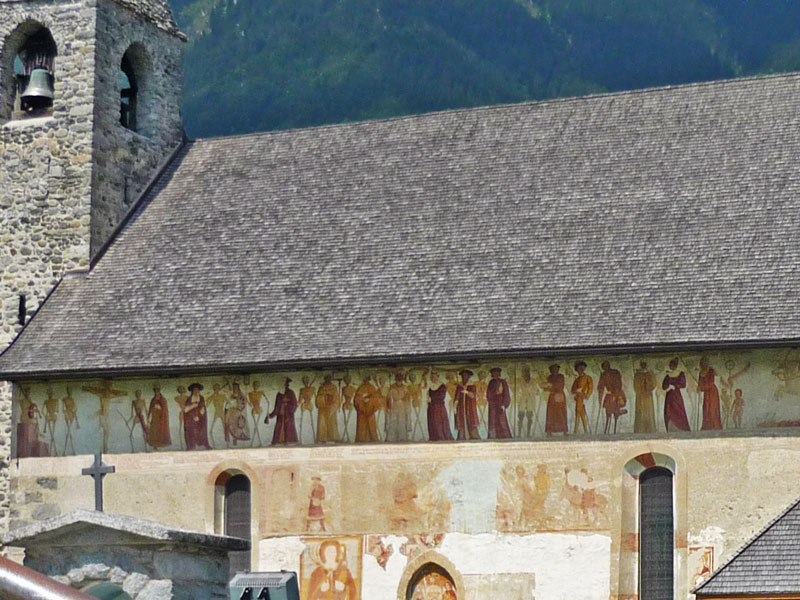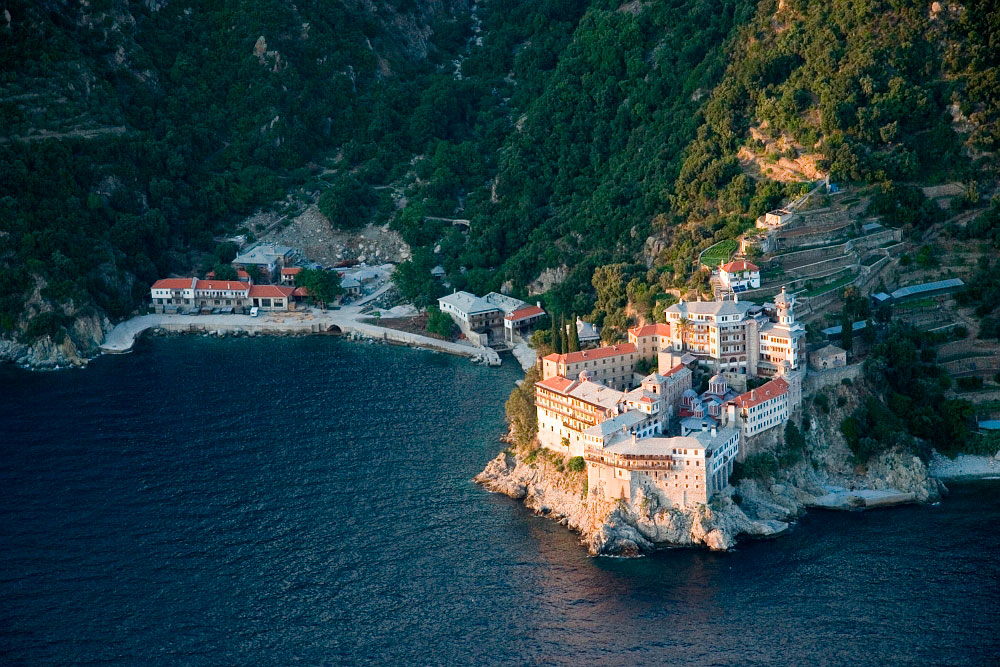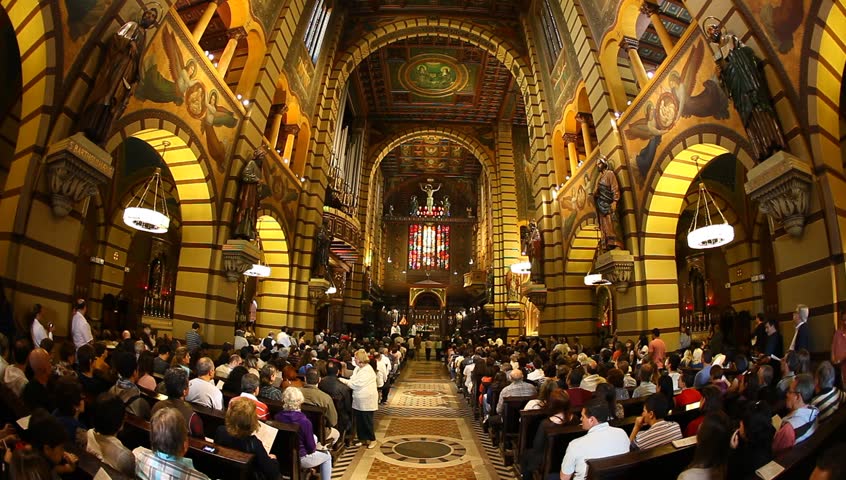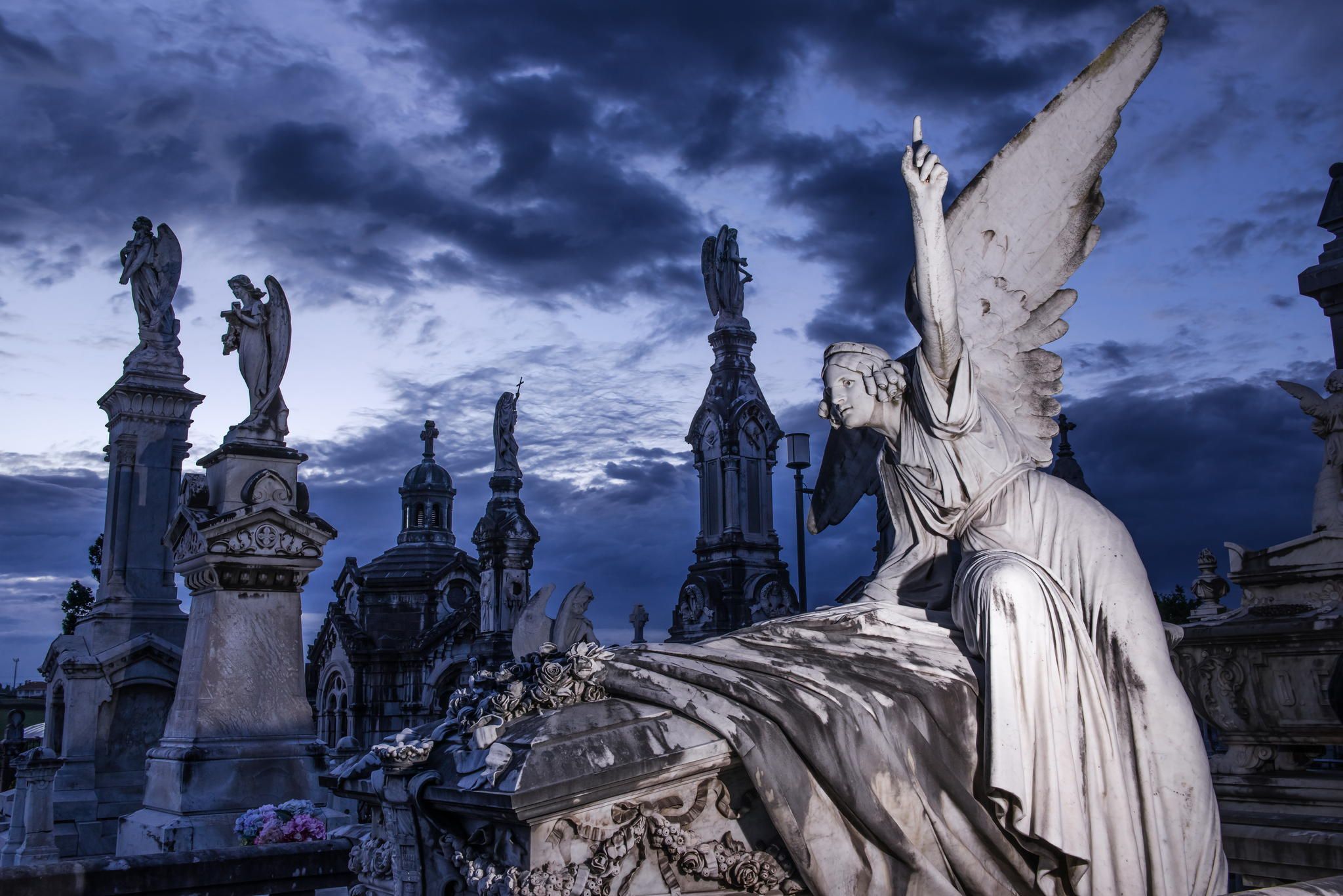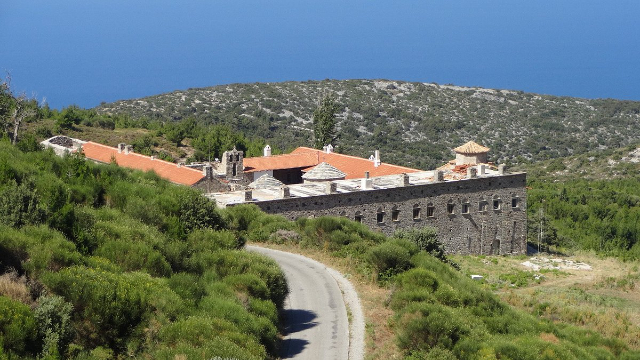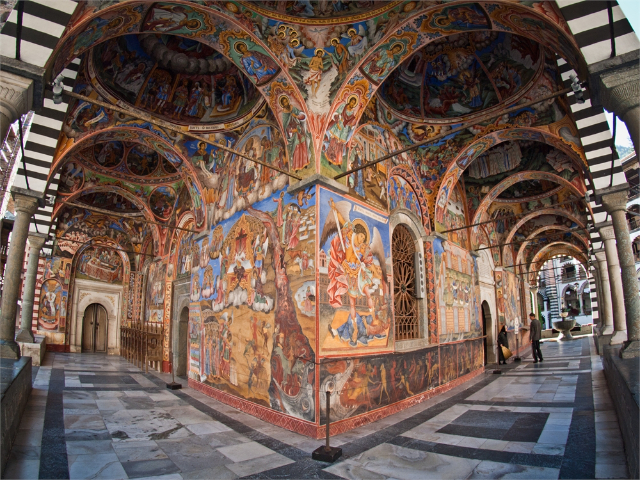The church of San Vigilio, near Pinzolo, as it appears today, is the result of subsequent extensions, the most important of which occurred in 1515, of an ancient church perhaps prior to 1000, built in honor of Bishop Vigilio, patron saint of the Trentino diocese, and martyred in Val Rendena around 400. It was the parish church of Pinzolo and Carisolo, until the division of the parishes and the subsequent construction of the church of S. Lorenzo in Pinzolo. It is famous for its artistic altars, for its internal frescoes and especially for "La Danza Macabra", the external fresco on the south facade.
"Io sont la Morte/ che porto corona/ sonte signora/ de ognia persona…"
So begins the crude poem of death that accompanies the famous fresco of the dance macabre painted by Simone Baschenis de Averara in 1539 on the south facade of the church of San Vigilio.
The macabre procession begins with a group of three musician skeletons, the first of which, seated on a rudimentary throne, wears a crown on his head as a symbol of sovereign Death, to which divine will itself must submit according to the words attributed to the Crucified: "O peccator pensa de costei/ la me a morto me che son signor de lei!"
To the left of Christ opens the parade of the eighteen couples, each of which is formed by a living character, socially characterized, and a dead person who drags him to the dance. The dead, depicted as skeletons, clearly defined, constitute the dynamic element of the representation, revealing resourcefulness and aggressiveness in the sneer with which they address their victims and in the variety of gestures with which they grab them to introduce them to the dance. To their vivacity appears weak the reaction of the living who express the most tacit resignation. The contrast between the dynamic attitude of the dead and the almost immobility of the living is made more evident by the captions: in the form of a monologue, recited only by the former, it underlines their superiority. The succession of couples reflects the rigid hierarchical conception of medieval society with its division between laymen and clergymen. The latter open the parade starting from the supreme spiritual authorities: the pope, the cardinal, the bishop, followed by the priest and the monk.
The message that is addressed to them reiterates the concept of the inevitability of death. The absence of a marked anti-ecclesiastical social satire and the calm irony testify to the existence of good relations between the population and the Prince-Bishop of Trento. The macabre procession continues with a number of representatives of the secular order also arranged according to a hierarchy that makes the emperor follow the king, the queen, the duke and then some characters of the bourgeois world, such as the doctor and the rich merchant. Later, socially connoted characters are replaced by individuals who symbolize the different ages of human life: young, old and a child. Death reminds them all, with different accents, of the impartiality of his work. The parade closes with the image of Death on horseback, armed with bow and arrows, who in his impetuous gallop thunders past a crowd of victims, some already struck and lying down, others still standing and petrified by terror. Baschenis’ epilogue to this scene is a painting of the Final Judgement which, linking up with the motif of the initial crucifixion, intends to frame the entire macabre representation in terms of the Christian eschatological vision.
The fresco not only proposes one of the most significant elements of the medieval history of Trentino, but also assumes the character of an allegory of universal death that comes down to us, that is, of the inexorable destiny from which no human creature can escape; and in this existential problematic, death is linked to life because it is admitted as an acting character. In the "union of opposites" surprise and astonishment disappear and we are left only with the acceptance of the whole that proclaims itself.
